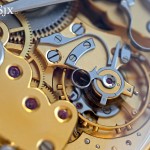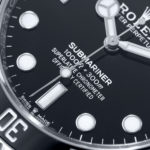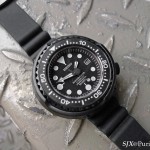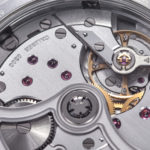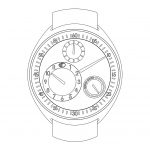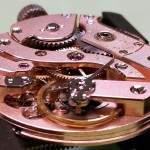In-Depth: Quantifying Performance and Trade-Offs in Movement Design Part II
Evaluating popular mechanical movements.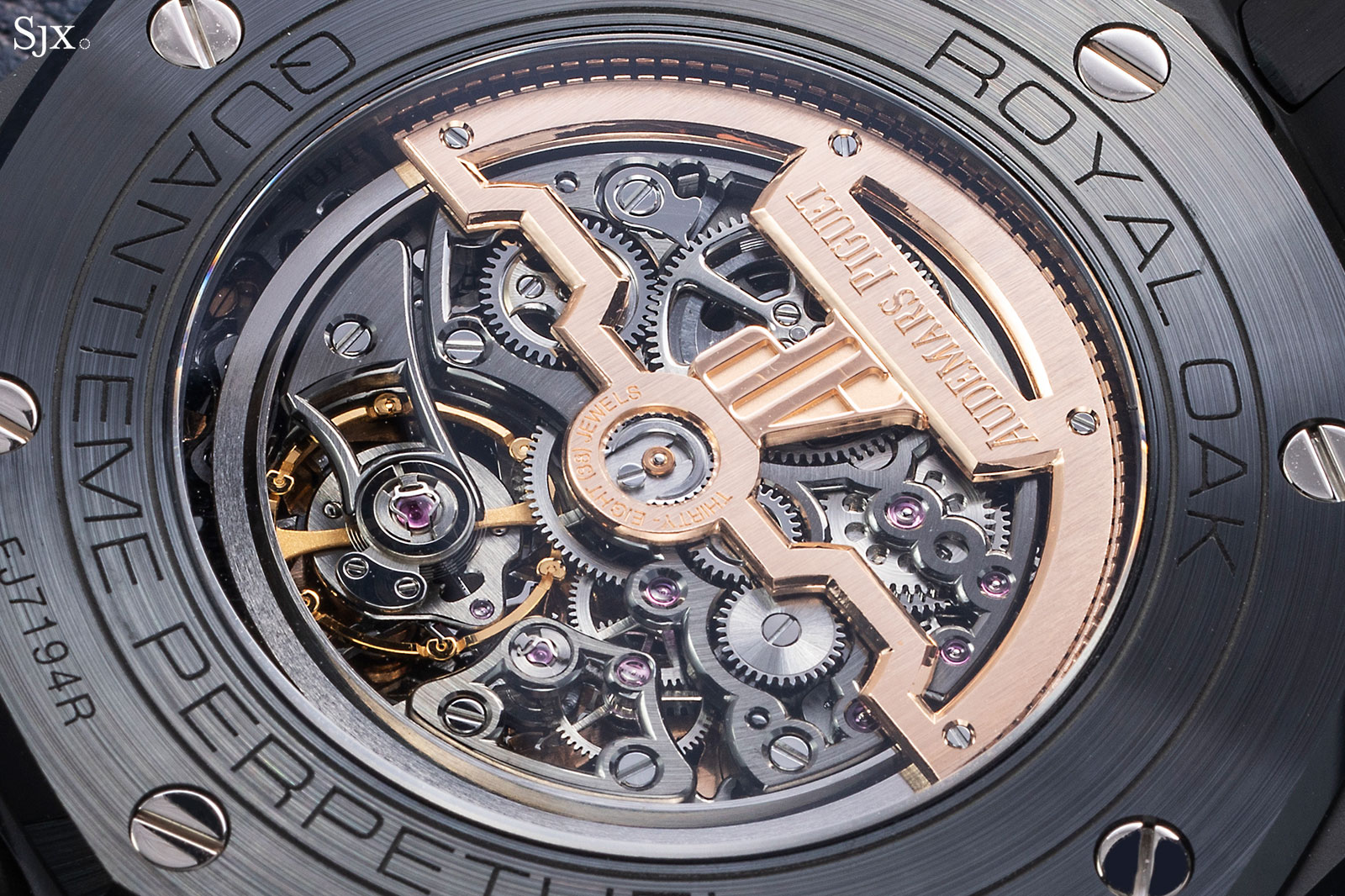
Previously, in Part I of this series, we analysed and reviewed over 40 watch movements in terms of their potential chronometric performance – via the Horological Density Factor (HDF), which encompasses balance power and power reserve against the size of the movement – and debated the various trade-offs that had been made in order to achieve specific technical or aesthetic characteristics.
Many readers then asked how more commonly known and accessible movements compare. To answer that we needed more data from the industry. Fortunately, Swiss movement makers Valjoux, Fabrique d’Horlogerie de Fontainemelon, Unitas, as well as their parent company Ebauches SA – now all part of ETA – once published beautifully comprehensive, detailed data sheets that included balance wheel inertia values.
Armed with this data, we have been able to analyse and plot a further 25 movements alongside the previous group (with the disclaimer that it might not be fully up to date since the data sheets date from before the Quartz Crisis in the 1970s) to give a total of 68 to allow further investigation and review.
The analysis
Several popular movements have been added: the workhorse ETA 2824-1 and -2, the ubiquitous ETA Valjoux 7750 chronograph, the large diameter ETA Unitas 6497-1 and -2, and the ETA Peseux 7001.
We also added, among others, the integrated chronograph cal. 4130 in the Rolex Daytona, and the modular chronograph versions of both the ETA 2892 (known as the ETA 2894) as well as the Jaeger-LeCoultre (JLC) cal. 889. The list was also expanded to include more recent movements like the new time-only Audemars Piguet (AP) cal. 4302 (to compare to its chronograph sibling, the cal. 4401), and Patek Philippe’s first in-house chronograph from 2005, the CH R 27-525 PS.
Research also uncovered data for two legends that have lasted decades: the latest version of the AP cal. 2121 based on the historic JLC cal. 920, and the Patek Philippe cal. 240 that celebrated its 40th year in 2017.
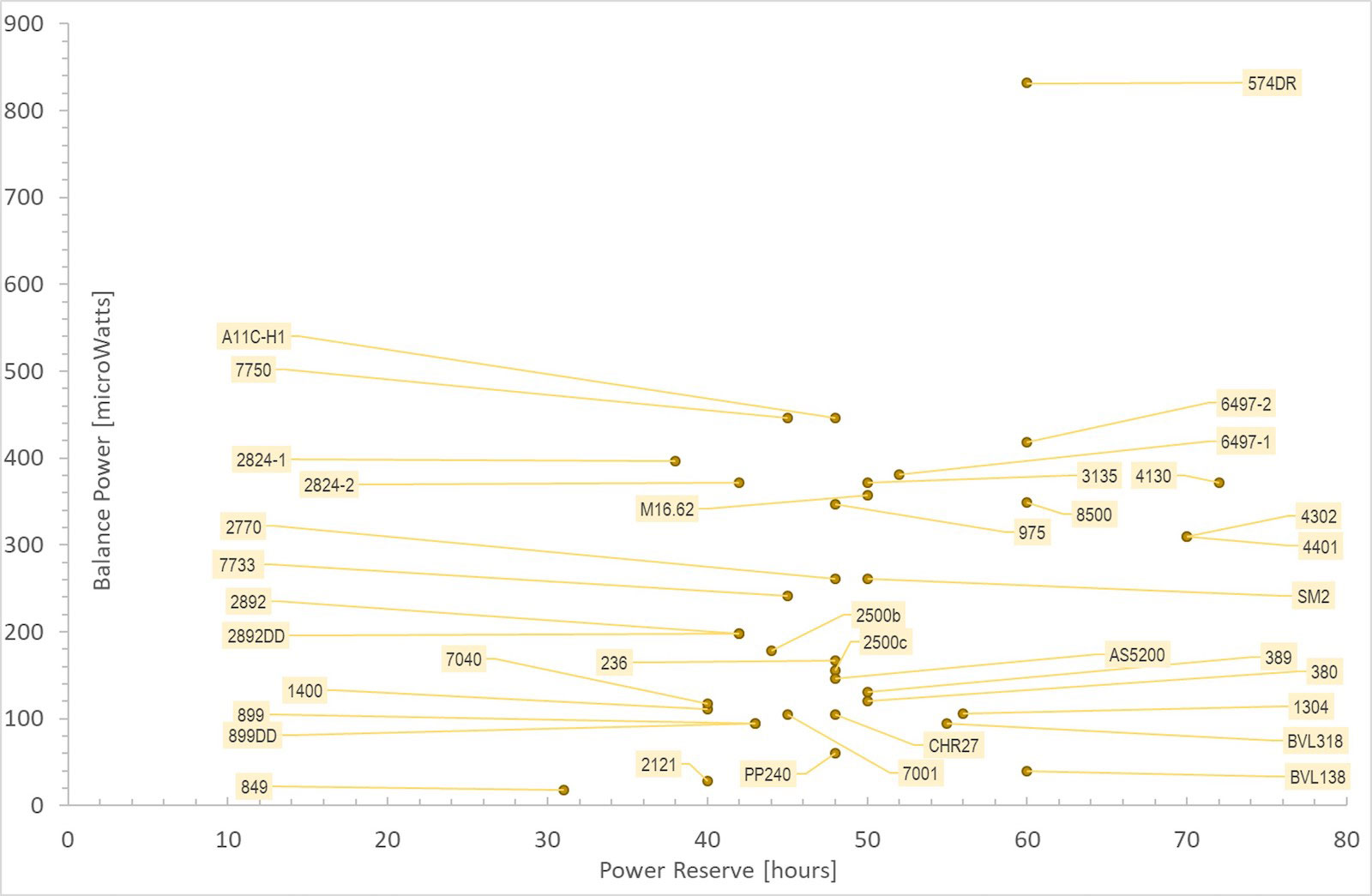
The additional 25 movements with their balance power over the power reserve period
Balance power
Immediately of note is that most of the newly added ETA movements have balance power levels higher than the chronometric workhorses from Rolex (cal. 3135 and 4130) and Omega (cal. 8500). The 7750 is also significantly higher with 20% more than the Rolex movements and 27% more than the Omega.
Our expanded sample size provided enough data to show a best-in-class trend for power for any given movement thickness. There is a definite trend that thin movements are limited in delivering high balance power levels.
Intuitively and through observation we can infer that this is the result of 1) reduced height of the mainspring, 2) sacrifices in the size of the balance wheel as more components (automatic winding train, chronograph works, etc.) are made to share the same plane as the balance, and 3) there is a natural limit on diameter for wearability.
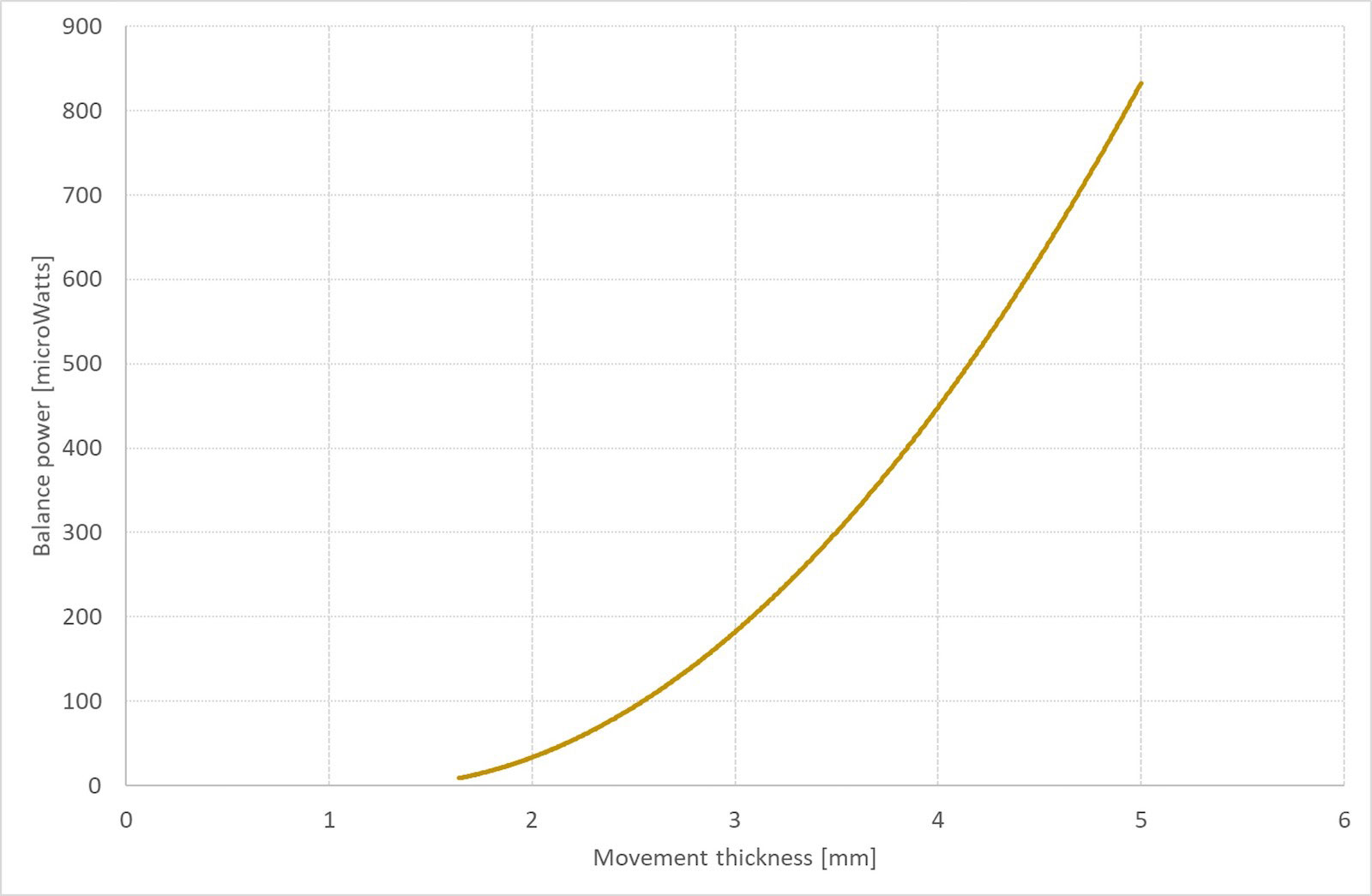
Best in class trendline showing maximum balance power achieved at a given thickness
Standout performances worth mentioning for movements up to 3 mm high include both industry old timers and relative newcomers alike :
- 1971 – ETA Peseux 7001, 2.5 mm high with 105 µW (manual wind)
- 1975 – JLC cal. 839/849, 1.64 mm high with 18 µW (manual wind)
- 1977 – Patek Philippe cal. 240, 2.4 mm high with 61 µW (automatic)
- 2001 – Vacheron Constantin cal. 1400, 2.6 mm high with 111 µW (manual wind)
- 2017 – Bulgari BVL 138, 2.23 mm high with 40 µW (automatic)
While it may have been expected that manual-wind movements would excel at balance power, the standouts include two automatics. However, they are micro-rotor designs and use horizontal space for their winding rotors. This results in thinness, but to the detriment of mainspring capacity. As a consequence, these micro-rotor movements have lower HDF values than their movement volumes may have otherwise allowed.
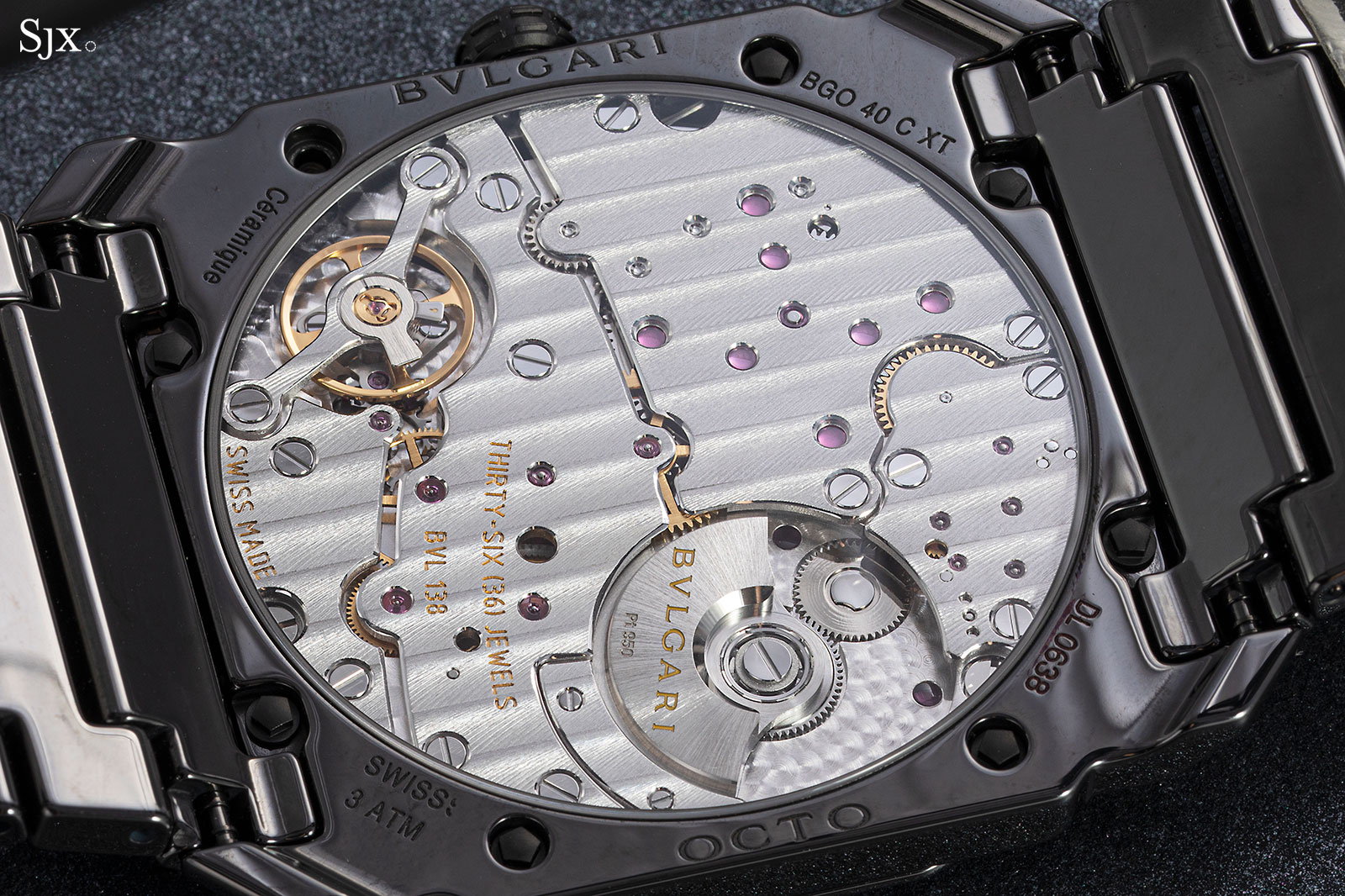
The BVL 138 in the Bulgari Octo Finissimo
Ubiquitous for good reason – the 7750
Aside from the magnetic-bearing exotica of the Breguet cal. 574DR; extreme balance size of the Kerbendanz; and direct-impulse, high-frequency RM031; the balance power winner is the modest and perfunctory Valjoux 7750. Its performance qualities have translated into commercial success: more than 10 million 7750s have been produced since the movement was introduced in 1973.
Not only is the movement extremely reliable in its standard form, it has proven itself to be an excellent canvas for further innovations from watchmakers like IWC’s veteran technical chief Kurt Klaus, Ludwig Oechslin while he was at Ulysse Nardin, Paul Gerber, and Richard Habring, all of whom have successfully added various complications ranging from a perpetual calendar, alarm, rattrapante, and even tourbillon to its core architecture – with no decline in chronometric performance.
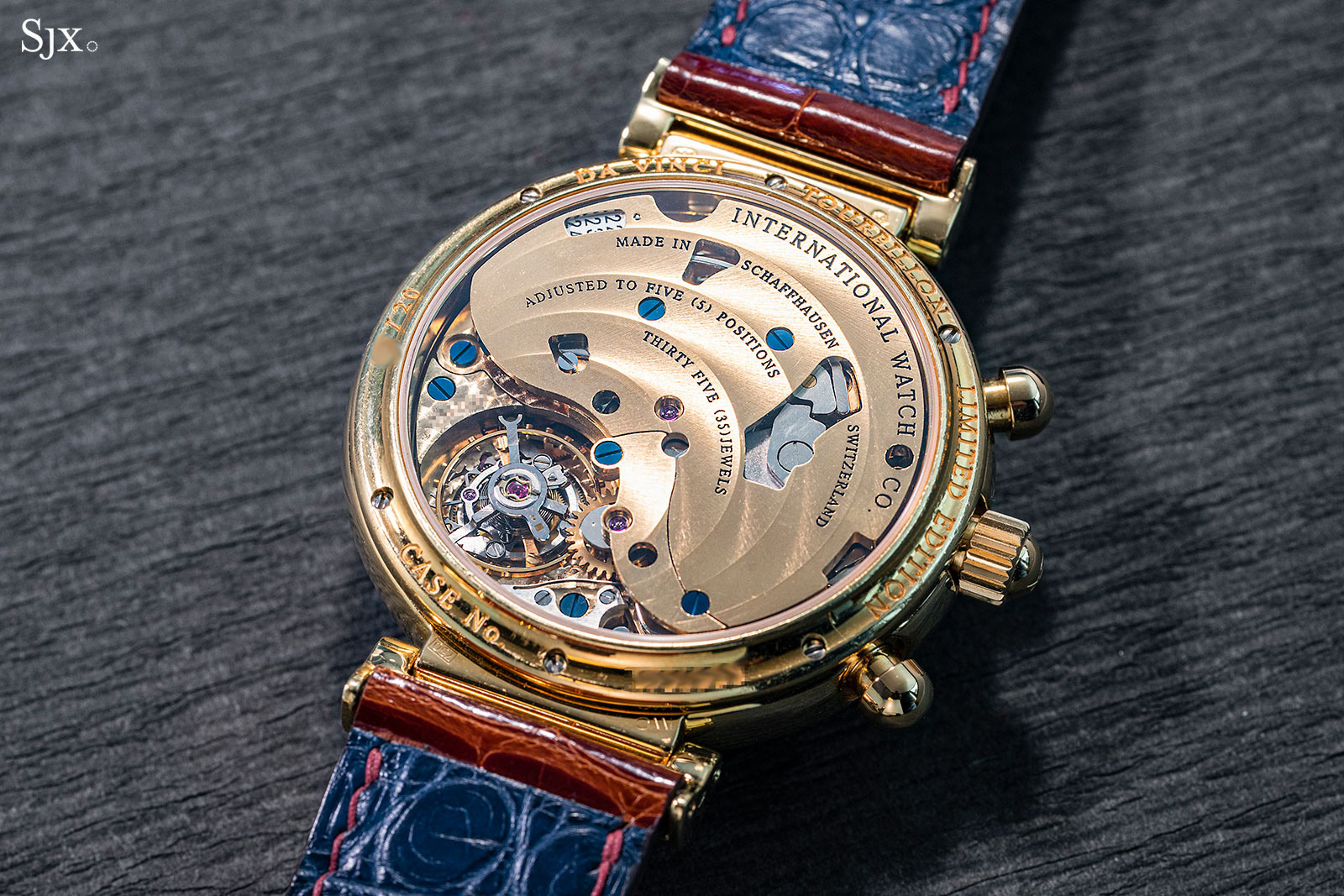
The IWC cal. 76061, which adds a tourbillon and perpetual calendar to the hand-wind version of the Valjoux 7750
It is probably not a coincidence that the 7750 has proven to be such a successful design. After all, it was designed in the early 1970s and unveiled in 1974, when the Swiss watch industry faced an existential threat from Japanese competitors like Seiko and low-cost quartz watches. With necessity is the mother of invention, one can only imagine the pressure felt by the 26 year-old Edmond Capt, who was tasked developing a low-cost automatic chronograph that could be mass produced.
In a previous conversation with SJX, Kurt Klaus referred glowingly to the 7750 as being “ideal due to its stable and substantial torque.” That was undoubtedly due to the rise of the personal computer: the 7750 was the first movement constructed with computer-aided design, which probably helped Mr Capt optimise the energy usage in the movement, one of the features that would help make it so adaptable to additional complications decades later.
Habring², in particular, has developed the 7750 even further. The Austrian brand’s own A11C-H1 takes the 7750’s high balance power to new heights of HDF, and thanks to being manual wind, it is almost 18% thinner than a standard ETA 7750.
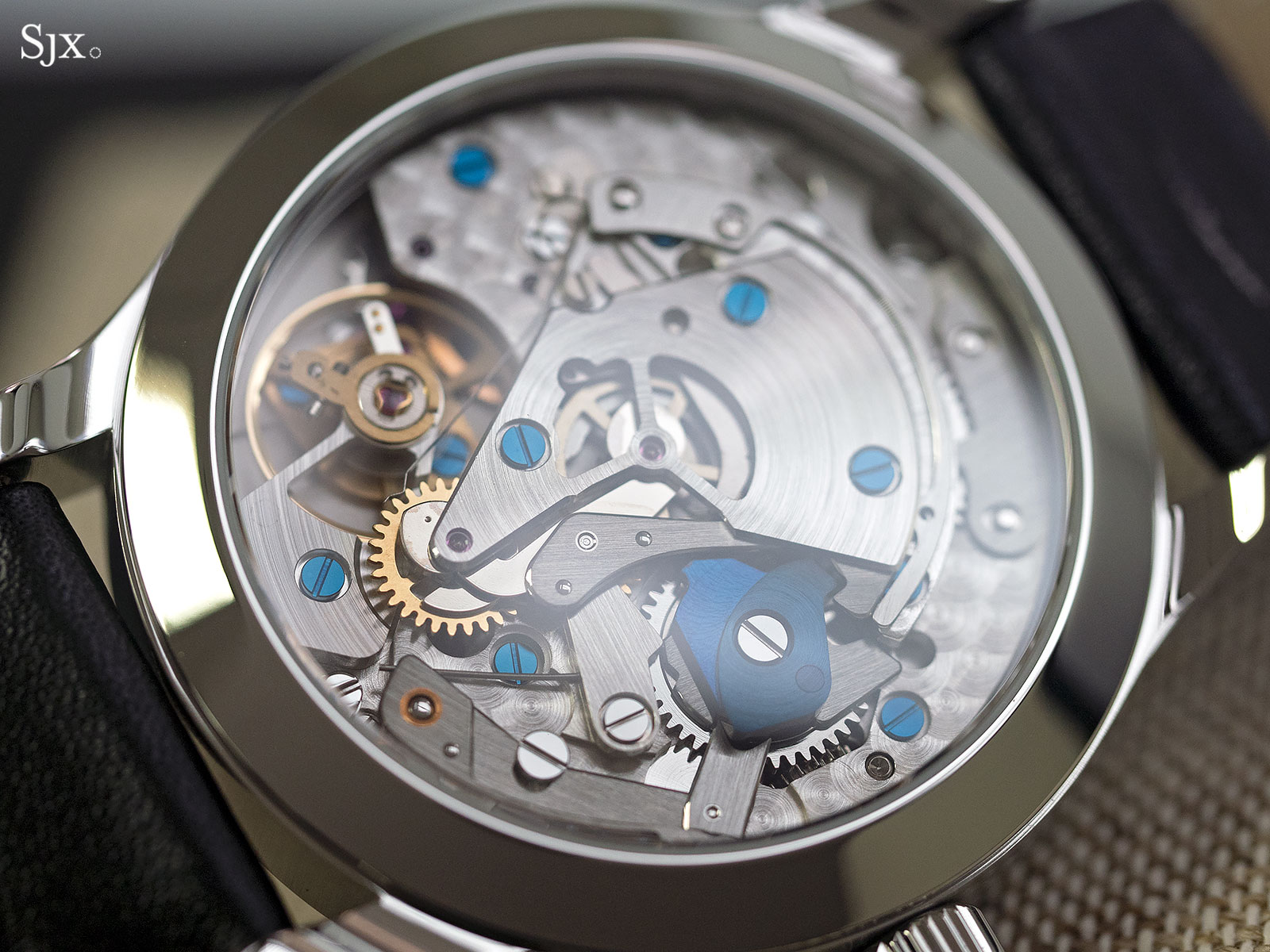
The enviable technical characteristics of the 7750 make it an ideal starting point for elaborate complications – the Habring2 A11 movement above is derived from the architecture of the 7750
HDF
To recap, in the preceding article of the series we computed a parameter christened Horological Density Factor (HDF). Larger diameter and thicker movements naturally allow for larger barrel(s), and wider, heavier balance wheels. To normalise for this, we computed HDF.
In simple terms, this figure helps determine which movements are the most efficient in providing energy per unit of volume. When plotted, it can tell us who has used the space well, be it for balance power or power reserve, and can give us insight into manufacturers’ motives.
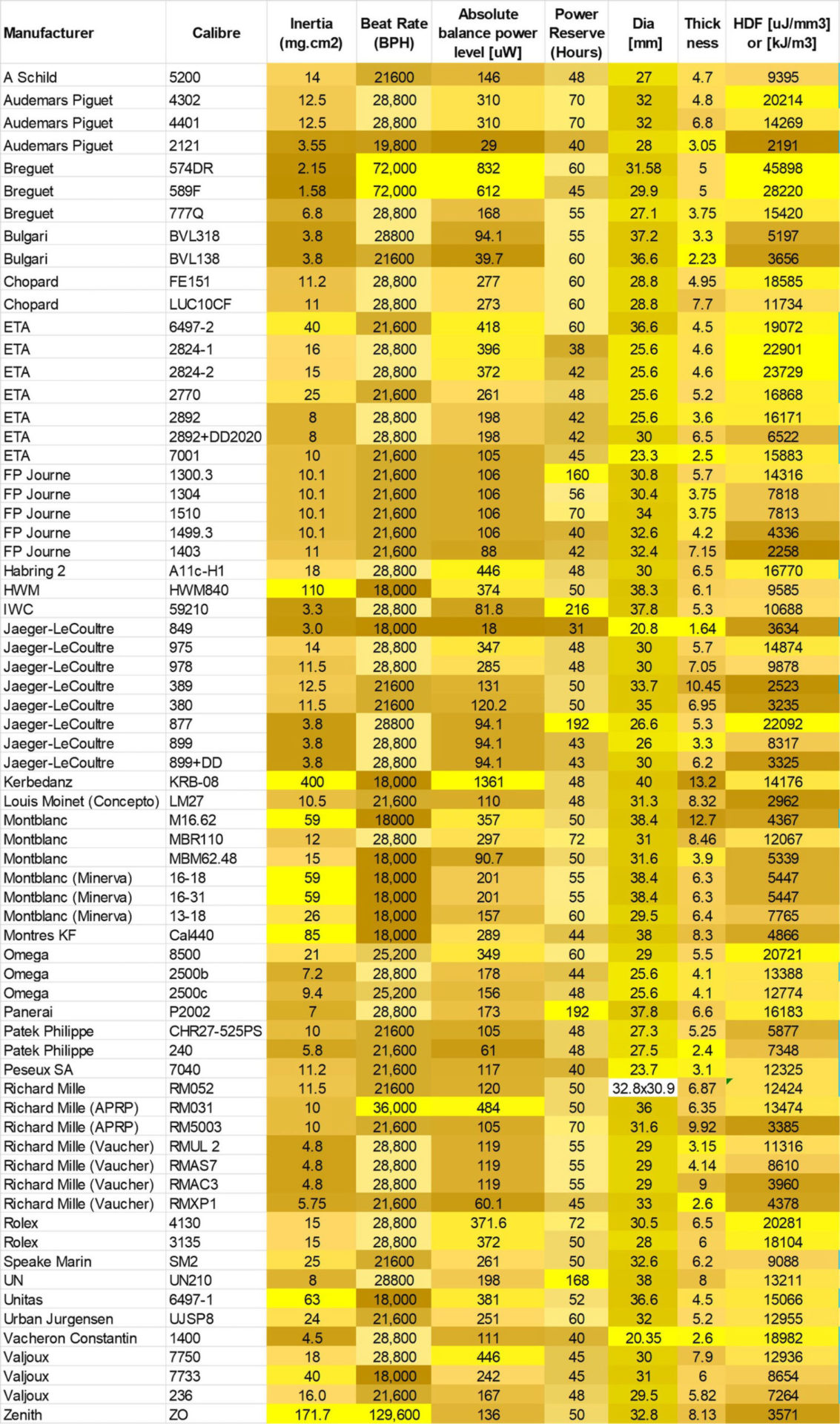
Performance figures for movements with available data (inertia for the Bulgari, Zenith and Patek Philippe movements are estimates) – the colours of the cells darken as performance deteriorates, and lighten as performance gets better
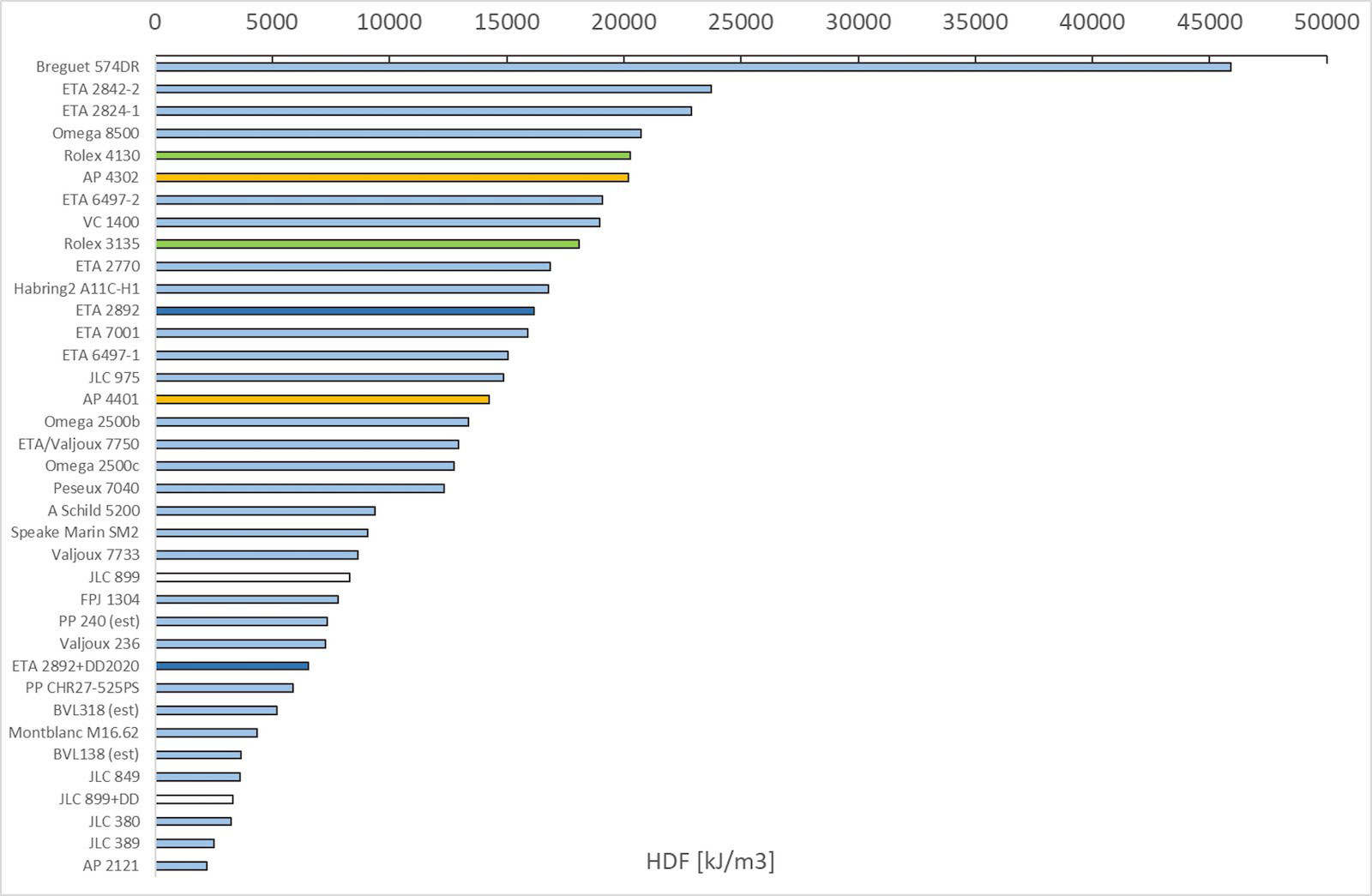
HDF by movement – colour pairs are time-only and chronograph versions of the same base calibre
In this simplified version of the previous chart, we have kept the highest – remember the staggering performance of the Breguet cal. 574DR is a combination of a balance running at 72,000 beats per hour and magnetic balance wheel bearings – and the common Rolex cal. 3135 as a reference.
AP’s newish cal. 4302 outshines the Rolex cal. 3135, however the new Chronergy-equipped calibres that Rolex is progressively rolling out will likely recover to HDFs in excess of 25,000. The Rolex cal. 4130 result is exceptional considering it also incorporates an integrated chronograph. Vacheron Constantin’s cal. 1400 scores well, balancing slender form with well-utilised space.
In terms of chronographs, the ubiquitous and venerable Valjoux 7750 ranks just behind the AP cal. 4401 in terms of HDF, but offers 40% more balance power. Compared to the Rolex cal. 4130, the 7750 is 20% up on balance power, but significantly behind on HDF by around 25%; a consequence of its lower power reserve and relative thickness. That leads to the obvious question: what is the impact of installing a chronograph mechanism, either by integration or with an add-on module?
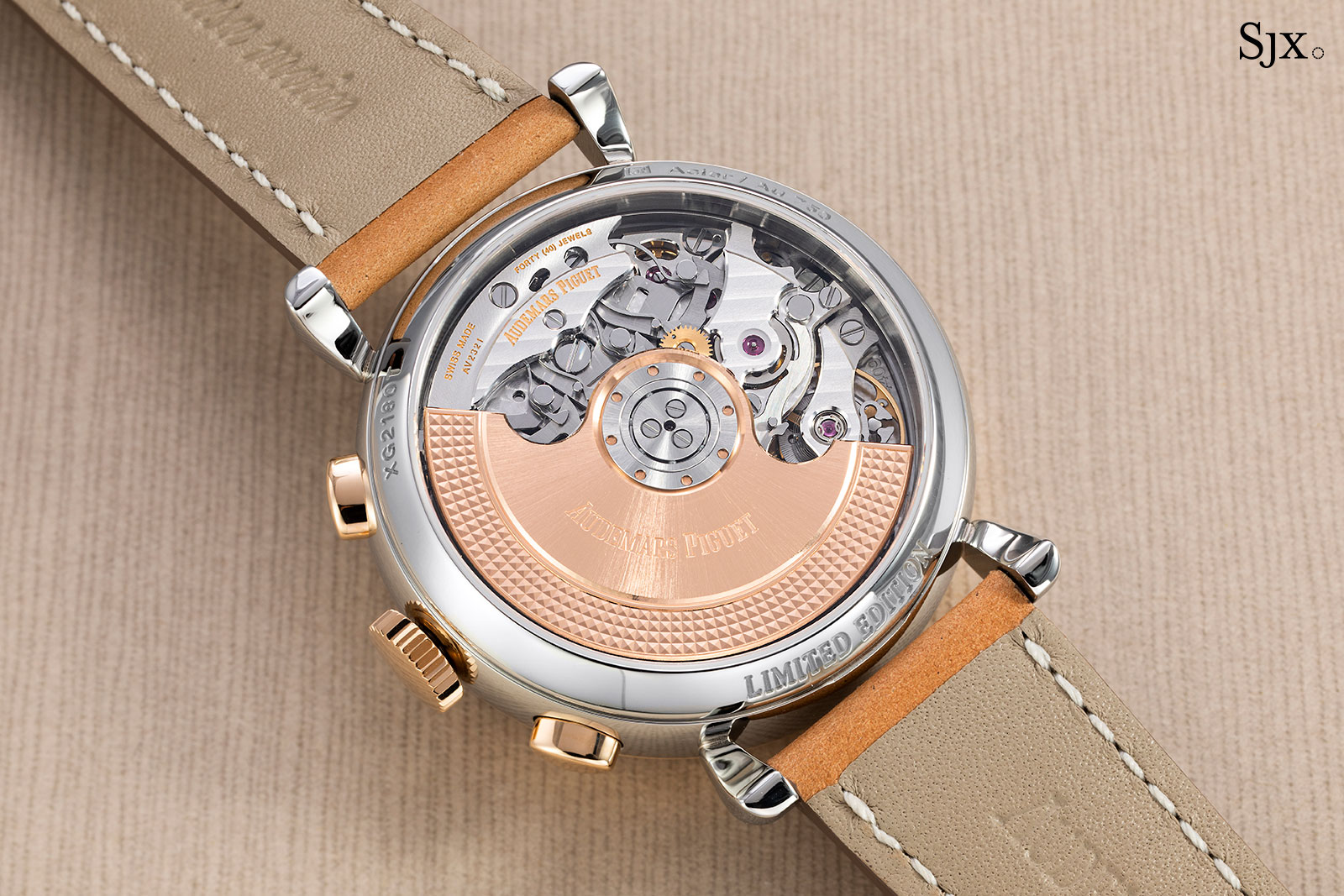
The AP cal. 4401, seen here in the [Re]master01
Chronograph: integrated and modular
Two integrated and two modular chronograph variants, by Rolex and AP respectively, can be discussed. The inclusion of the Rolex cal. 4130 compared to its cal. 3135, along with the AP cal. 4302 and 4401, allows us to consider the impact of the addition of the integrated chronograph complication. In both cases, the time only movement is thinner but in the case of the Rolex only by 0.5 mm, whereas the time-only cal. 4302 is 2 mm thinner than its chronograph counterpart.
The Rolex cal. 4130’s diameter advantage of 2 mm is used to good effect. Contrary to expectation, the HDF for the Rolex cal. 4130 chronograph is some 12% higher than the cal. 3135, a consequence of its much higher power reserve.
Conversely, the time-only cal. 4302, with otherwise identical attributes packaged in the more svelte 4.8 mm thickness, posts a HDF of 20,233, 40% higher than its chronograph sibling, putting it amongst our top scorers.
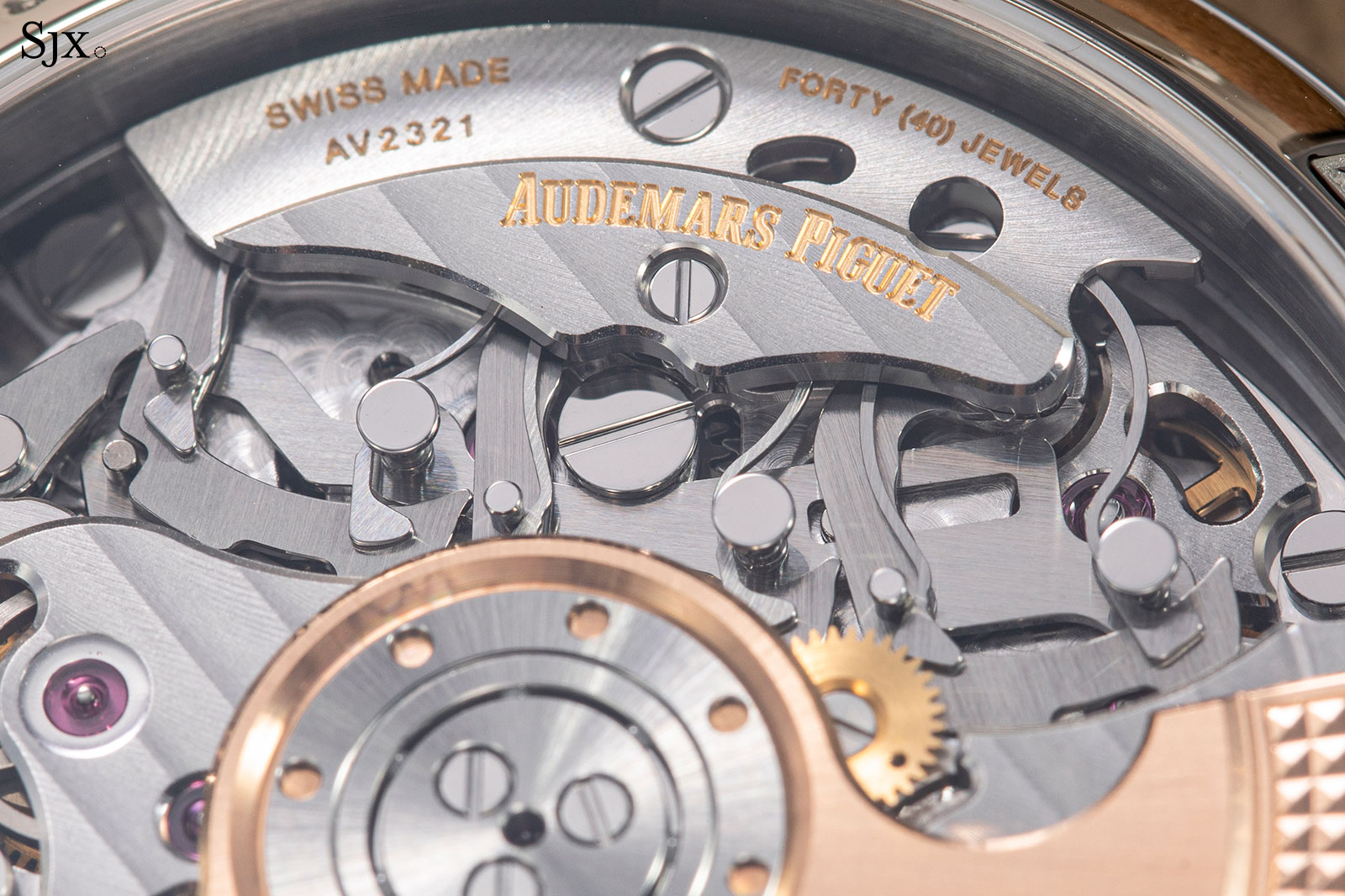
A section of the integrated chronograph mechanism in the cal. 4401 from AP
For the modular approach, the obvious downside is the increased thickness due to the module, but the consequence of such a addition is often made worse by the fact that chronograph modules are often larger in diameter than the base movements, leading to wasted space circumferentially around the base movement.
The increase in volume is not accompanied by a corresponding increase in performance. For example, the common Dubois-Dépraz DD 2020 module (with a 12-hour counter) added to the ETA 2892 reduces its HDF by 60%! If a similar chronograph-date module had been added to the JLC cal. 889, as was done in the pre-2007 AP Royal Oak Offshore, its HDF also falls 60%, resulting in an absolute value similar to that of the JLC cal. 380 found in the Duomètre à Chronographe.
The decline in HDF is all the more striking because despite the fact that the combined thicknesses of base movement and module (6.5 mm and 6.2 mm respectively for the ETA 2892 and cal. 889) are actually less than or equal to the integrated chronograph movements from AP and Rolex studied above.
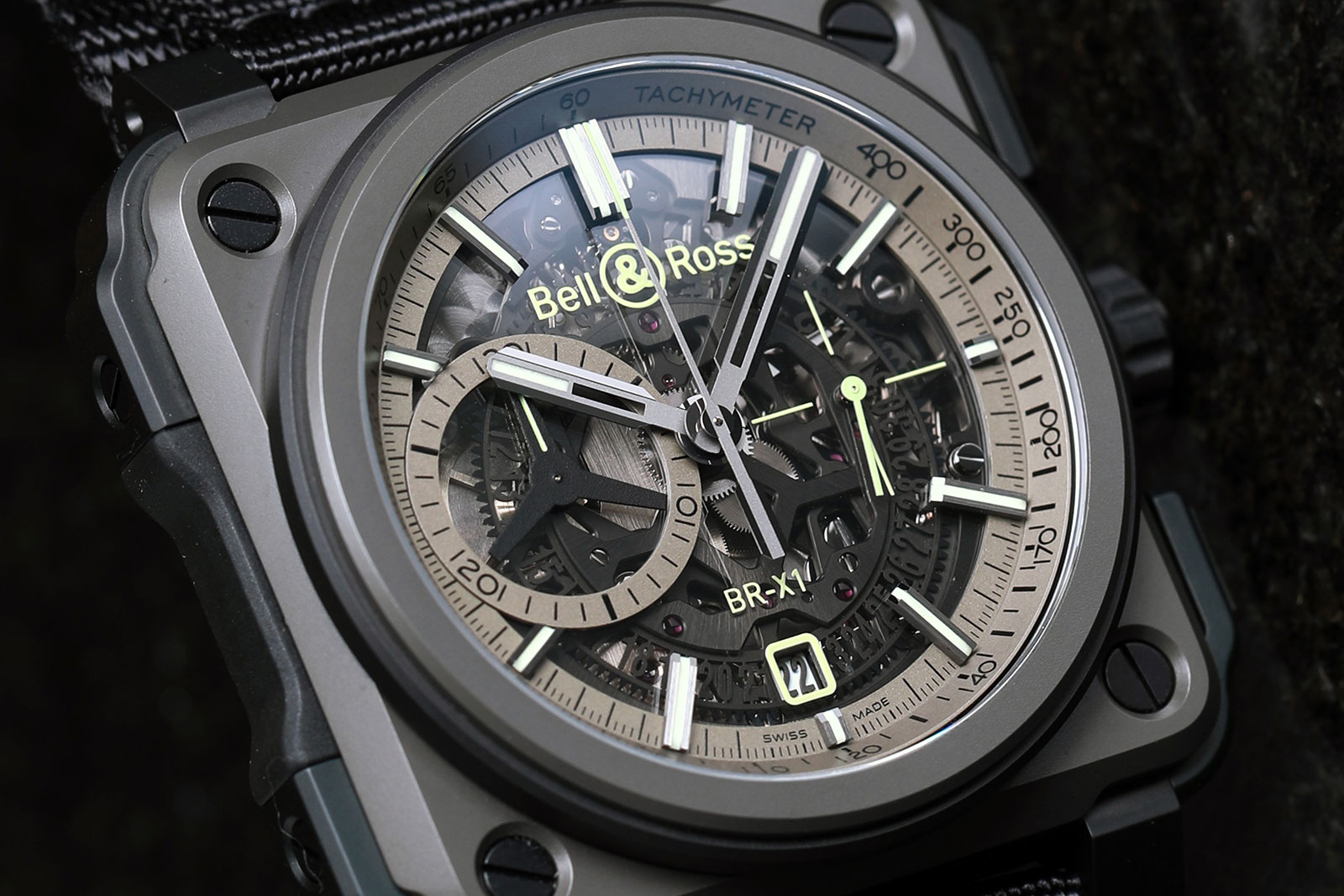
The Bell & Ross BR-X1 features an ETA 2892 with a custom skeletonised Dubois-Dépraz chronograph module on top
The synergies and efficiencies in a well-organised integrated chronograph are thus well demonstrated. However, the benefits of integration can be undermined by aesthetic trade-offs.
Consider the ultra-thin Bulgari BVL 318 and Patek Philippe CHR 27-525 PS. Due to its thinness, the BVL 318 offers an HDF of only 5197; a quarter of that offered by Rolex’s cal. 4130.
The CHR 27-525 PS does a little better, achieving a HDF of 5903. But in its defence, Patek Philippe deserves plaudits for managing to fit a split-seconds chronograph into a package only 5.25 mm high – making it one of the all-time thinnest split-seconds chronograph movements in a wristwatch.
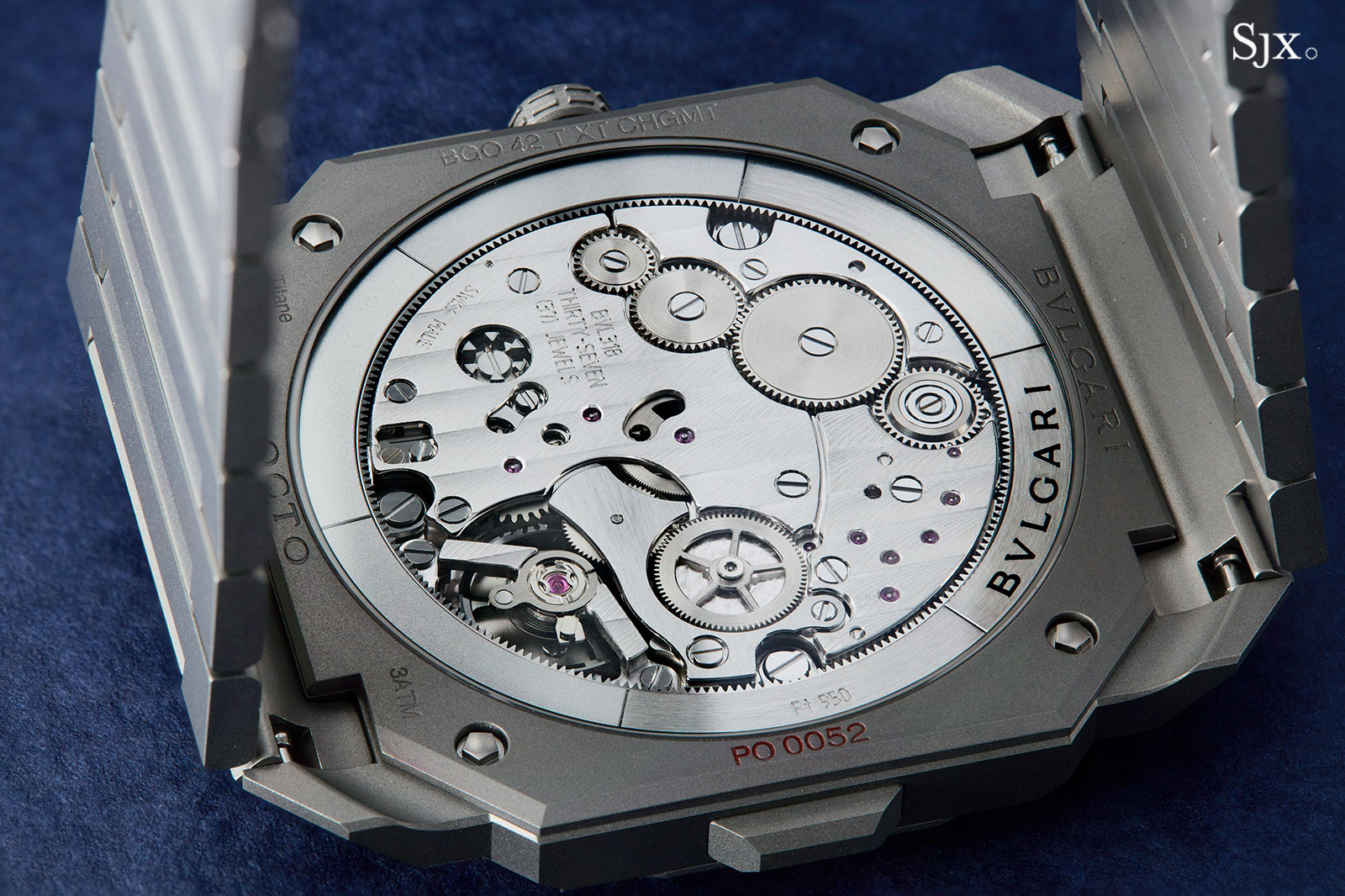
The BVL 318 in the Octo Finissimo Chronograph
The surprise performer
In Part I, we noted the strong performance of the ETA 2892, which nearly matched the Rolex cal. 3135 and ranked just ahead of the JLC cal. 975 Autotractor. Upon further study, ETA movements continue to place very highly for HDF.
But even the ETA 2892 is outshone by its stablemate, the plain and modest ETA 2824-2, which offers an astonishing HDF of 23,729. This venerable movement packs a high power balance into a versatile and traditional automatically wound 25 mm-diameter package with competitive thinness of 4.6 mm. It is let down only by its unfashionably short power reserve of around 38 hours. Still, with its no-nonsense reliability, a chronometer-grade ETA 2824-2 is a paragon of packaging performance at any price.
ETA has recently sought to capitalize on the inherent qualities of the 2824 by addressing its main shortcoming: the power reserve. The result is the ETA Powermatic C07.111. The main targets of its development were to extend the power reserve – they managed 80 hours – and reduce the manual work during manufacture.
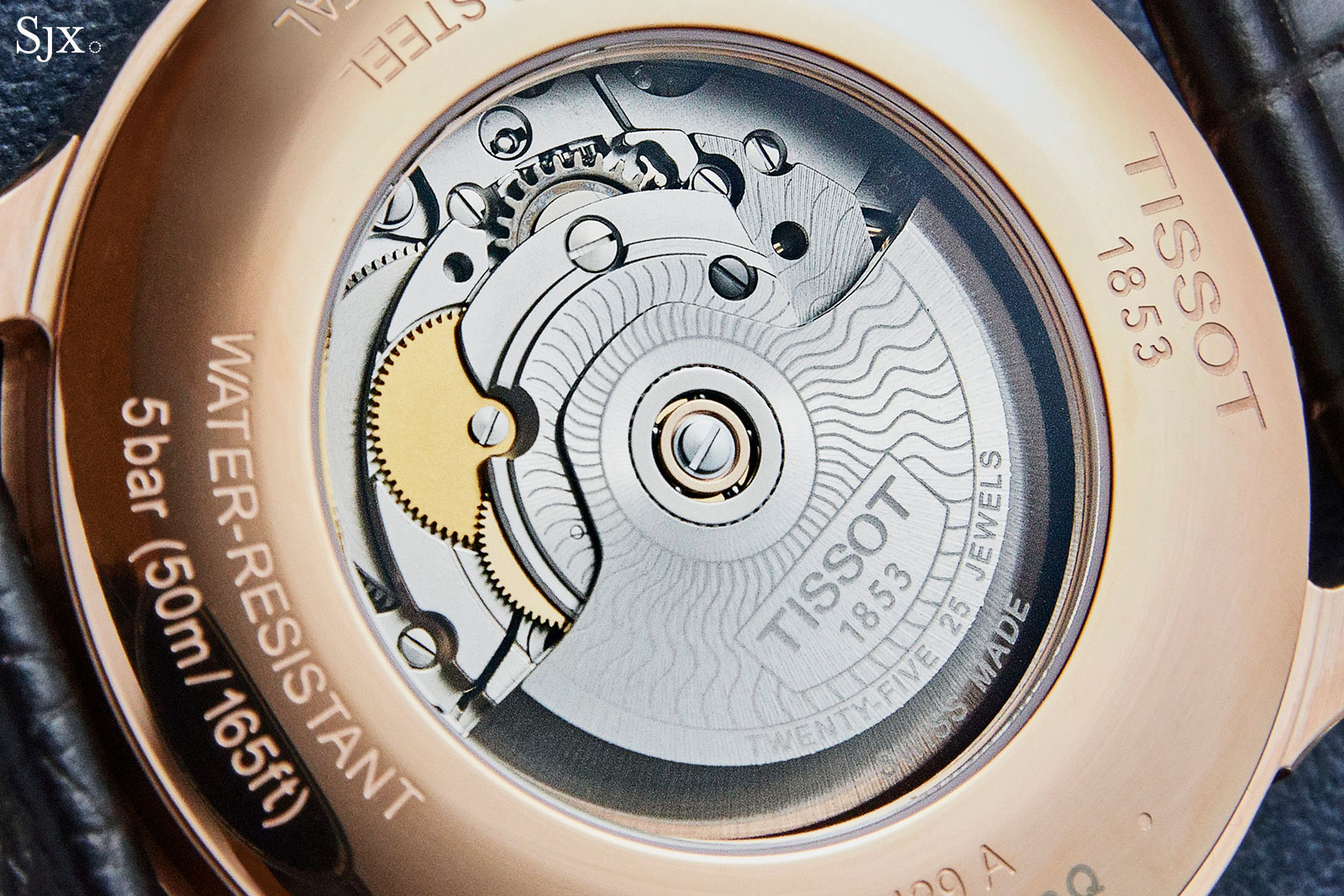
An unlikely hero: the ETA C07.111 in this Tissot is an evolution of the ETA 2824
To get there, the beat rate was reduced to 21,600 beats per hour. A polymer escapement and silicon balance spring were also installed, and the spring barrel was modified. We have no data for the balance inertia, but we can use our calculations to postulate the likely outcomes depending on balance choice as follows:
- Assumption 1 – 18.5 mg.cm2 balance: Balance power of 193µW and with a power reserve of 80 hours gives a HDF of 23,517 (the balance wheel is actually very similar to that of the 7750). This case is based on matching the available spring energy. Hence, the HDF is similar as this simply a trade-off between balance power and power reserve.
- Assumption 2 – 25 mg.cm2 balance: Balance power of 261 µW and for 80 hours power reserve gives a colossal HDF of 31,780 (again, the balance wheel is based on that fitted to the ETA 2770). This case would require a 34% gain in spring energy, which seems unlikely given that no radical changes were made to the packaging.
If we can assume a 10% gain in mainspring performance achieved from improvements like reducing the barrel wall thickness and friction, then a 20.5 mg.cm2 balance is feasible giving 214 µW of power. With an 80 hour power reserve, the HDF becomes 26,060 – an impressive achievement.
Furthermore, ETA believes its can improve the chronometric performance of the C07.111 despite the much lower balance power level (a decline of some 40%) because of the precision made possible by modern methods of automated manufacture, assembly and adjustment. However, they are not only giving away balance power but also beat rate.
We previously discussed the issues around real world dynamic performance on the wrist compared with COSC testing and the conclusion was simple: “Faced with real-world conditions, faster (beat rate) is probably better, all else being equal.” This leads us to the discussion of achieving good chronometry at lower power levels.
The exception that proves the rule
We previously noted that slim movements necessarily trade chronometric potential for slender form or for aesthetic effects. But recall that performance on the wrist is due to a number of factors, in addition to balance power.
A consistent flow of power, the use of a free-sprung balance, the materials, and the care taken during assembly, adjustment, and regulation will have a substantial impact on actual rate-keeping in the real world. In short, it is possible to achieve good performance with low balance power.
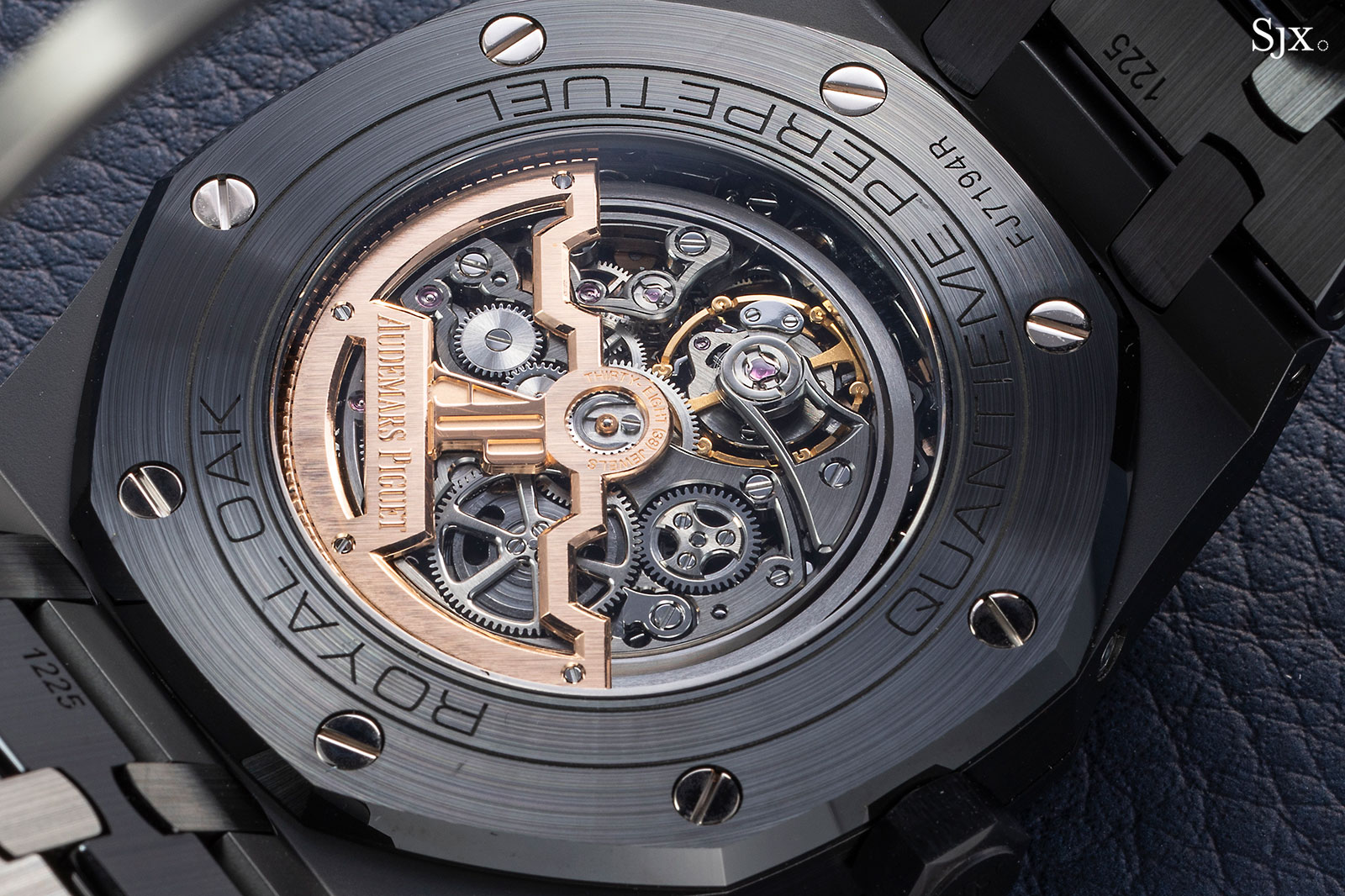
Here in its skeletonised version with a perpetual calendar, the AP cal. 2121, one of the newest forms of the decades-old JLC cal. 920 is 3.05 mm high with a date; the date-less variant is even thinner at 2.45 mm
A practical example of this is the highly regarded, super slim, self-winding JLC cal. 920, still used today by both AP and Vacheron Constantin as the cal. 2121 and 1120 respectively.
Though now produced in-house by both AP and Vacheron Constantin, this movement was originally developed by JLC as the cal. 920. Launched in 1967, the movement carries the special distinction of being the only movement used by the traditional “holy trinity” of Swiss watchmaking: Patek Philippe, Vacheron Constantin, and Audemars Piguet.
It is best known for being found in the original luxury-sports watches, the AP Royal Oak ref. 5402 (as cal. 2121) of 1972, Patek Philippe Nautilus ref. 3700 (as cal. 28-255) of 1976, and Vacheron Constantin 222 (as cal. 1121) of 1977. Add to that the fact that the movement was originally designed by JLC – arguably the only historically important haute horlogerie movement maker still in operation – only serves to cement its cultural significance.
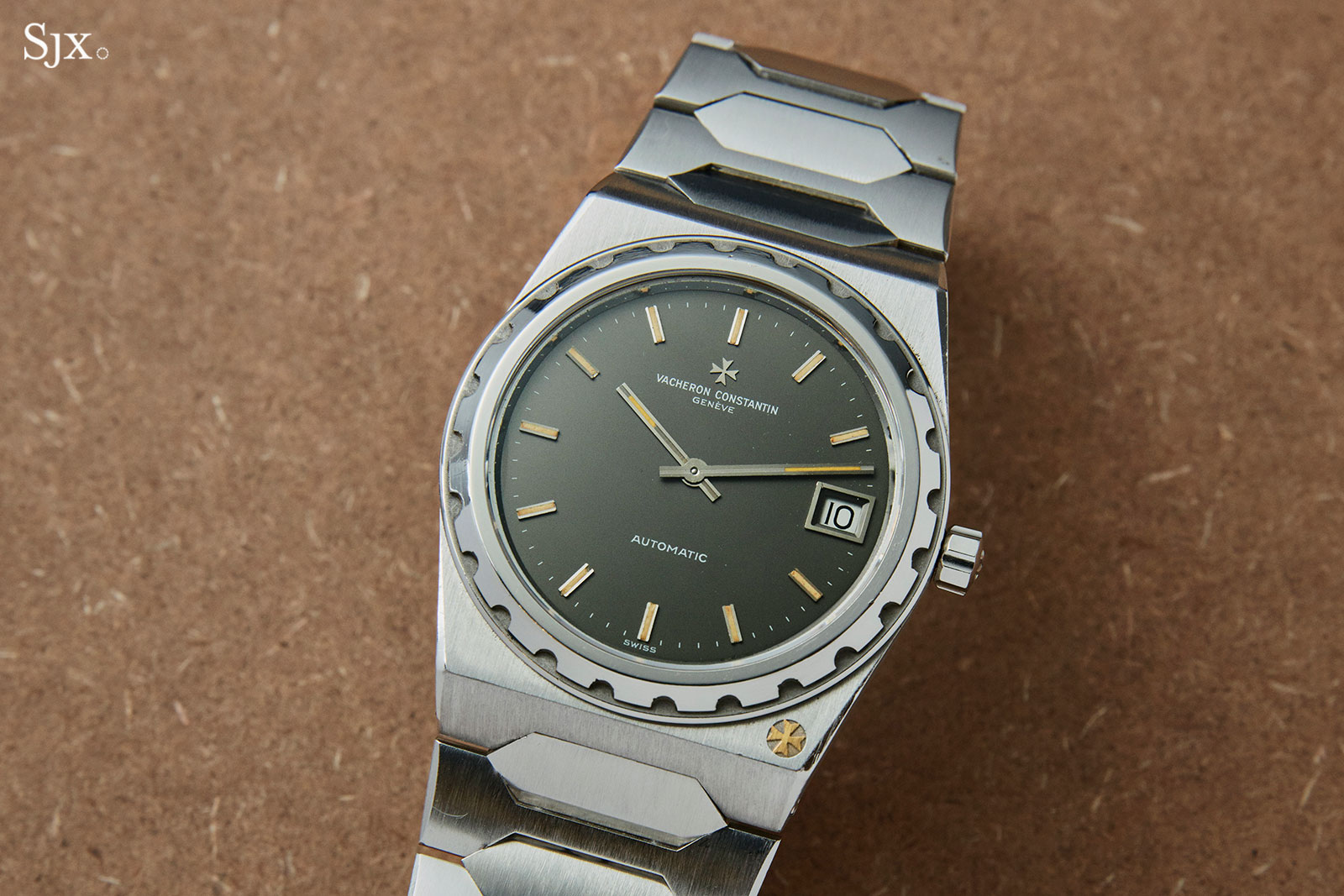
A Vacheron Constantin 222 in steel
As we have observed above, ultra-thin movements tend to suffer from low balance power, almost universally, and the cal. 920 remains the slimmest full-rotor automatic produced today. Intriguingly, the movement features a diminutive balance wheel and an antiquated frequency of 19,800 beats per hour, a combination that does not look good on paper, adding up a balance power of only 29 µW, or 1/13 of the benchmark Rolex cal. 3135. But it nonetheless manages to produce admirable chronometric performance in the real world and often powers additional complication modules to boot.
So how is it possible to deliver good timekeeping in the low balance power examples? Perhaps the best explanation lies in the way some of these movements are produced. Unlike most modern watch movements that are products of sequential operations on an assembly line, each cal. 920 is still assembled, adjusted, and regulated by a single highly skilled watchmaker at both AP and Vacheron Constantin.
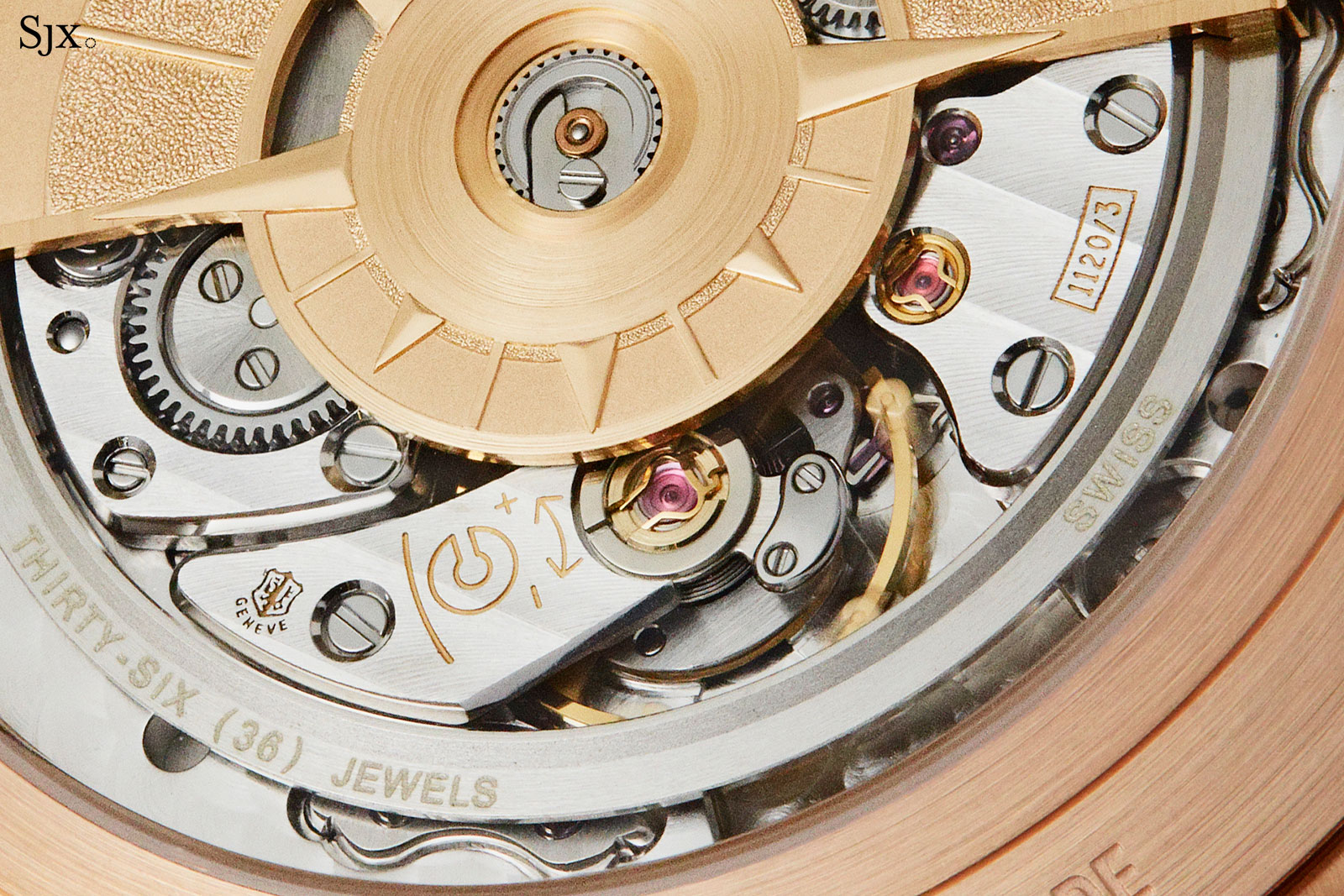
Detail of the cal. 1120/3, which is the Vacheron Constantin version of the cal. 920
This process, akin to “blueprinting” a racing engine, affords the smoothest possible flow of the very low driving torque, optimum balance poise, as well as adjustment of the balance spring and escapement, thus extracting maximum performance and chronometry from the components. And the process is also why watches equipped with movements derived from the cal. 920 cost substantially more than seemingly similar watches.
In the case of Patek Philippe’s cal. 240, an optimised gear tooth profile and polished gear teeth help optimise efficiency from spring barrel to escapement. And there may be more innovation yet to come.
In the Ref. 5550 Advanced Research Perpetual Calendar from 2011, the cal. 240 movement received a GyromaxSi balance wheel with adjustable gold weights, Pulsomax escape wheel and pallet fork, as well as the Spiromax hairspring – components that are all made of silicon and collectively termed Oscillomax. This ensemble was claimed to achieve previously unmatched results in rate accuracy. The boost in autonomy – to more than 70 hours as opposed to 48 hours in the stock version – would lift its HDF by 45% to 10,715.
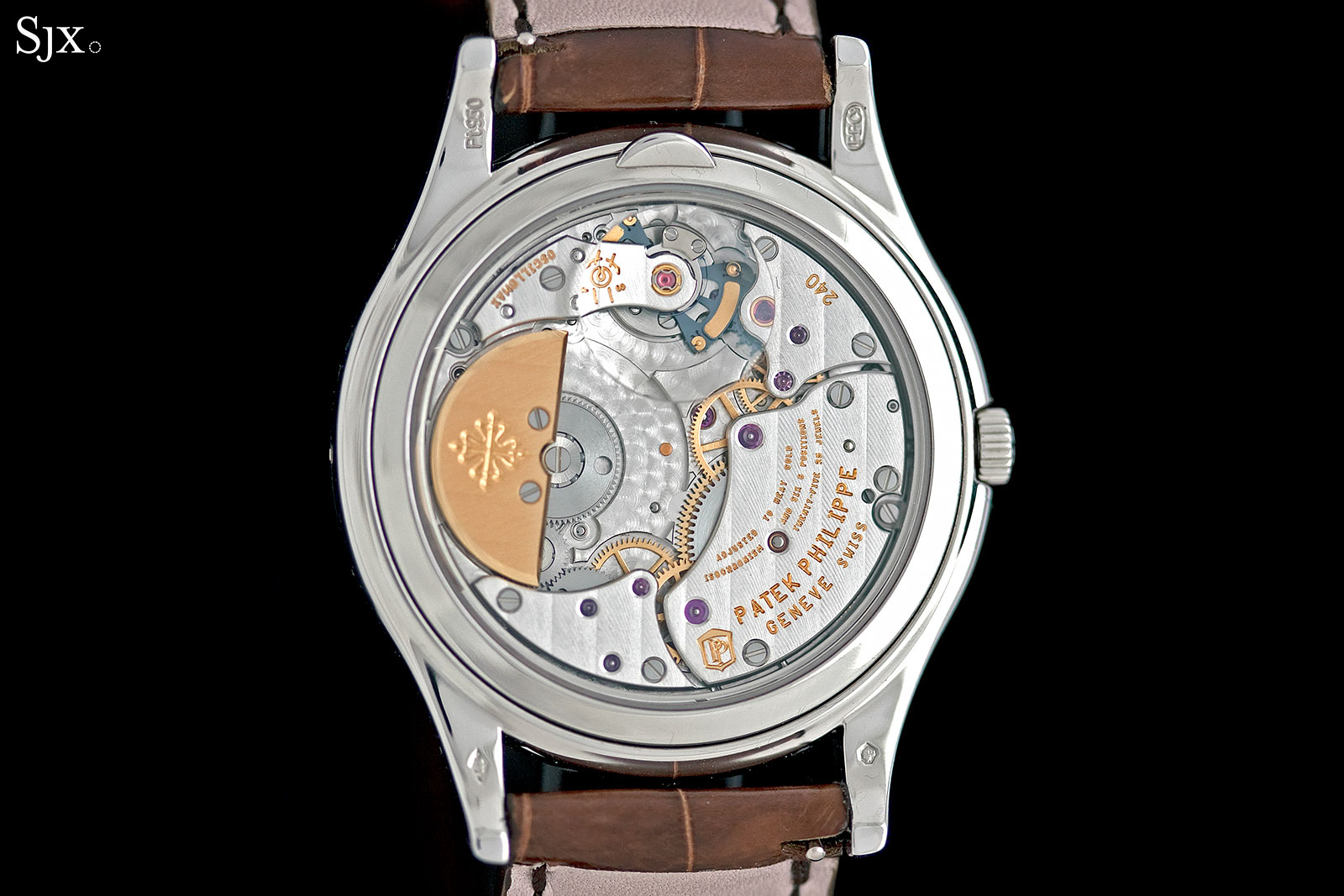
The Patek Philippe cal. 240 Q Si in the ref. 5550P Advanced Research Perpetual Calendar
In contrast, mass-produced movements like the Rolex cal. 3135 and ETA 2824 do not benefit from the same kind of attention, finishing, and adjustment that get lavished on the cal. 920. Instead, the need for this kind of care has been designed out of these movements, in part by stepping up balance power, in order to deliver performance at scale.
And, as recently discussed, this trend is only accelerating through the increasing use of modular. pre-assembled component groups and computer-controlled adjustment. This trend may be best exemplified by the the Swatch Sistem51, with its fully-robotic production process, but these production methods are slowly creeping up the price ladder, replacing the skilled hands of watchmakers at many major luxury brands.
For the moment, at least, hand-assembled and adjusted movements like the cal. 920 can remain the exception that proves the rule.
Notes on the data:
ETA Valjoux 7750 values from Uhrentechnik: Uhrenkonstruktion und Prozesstechnik by Kilian Eisenegger and corroborated with parts listing from ETA archive. Power reserve values published for the movement also vary between 42 and 50 hours.
Rolex cal. 4130 balance inertia was based on being the same as the Rolex cal. 3135.
Bulgari BVL 138 and 318 inertias were estimated as in the analysis done in part I.
Patek Philippe cal. 240 balance inertia estimated from two independent drawings and averaged.
The Richard Mille RM 52 was the only non-round movement.
Back to top.

